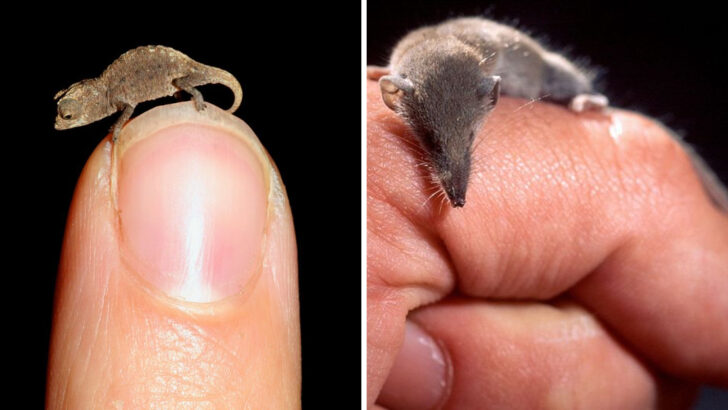You might not see them—but they see you. Some animals are so small, you could balance them on your fingertip. Yet many of these miniature marvels have sharp senses, bizarre behaviors, or bold personalities packed into their tiny frames. Don’t let their size fool you—some can jump, sting, or stare you down like giants. From frogs the size of flies to lizards barely larger than a grain of rice, nature didn’t hold back on creativity. Some glow. Some hiss. Some spy on you from flower petals or leaf litter without making a sound. They’re real, they’re wild, and they’re almost invisible. And yes, some of them might be closer than you think. Let’s meet 15 of the world’s tiniest animal species—each one small enough to fit on your finger… and curious enough to keep an eye on you.
Paedophryne amauensis
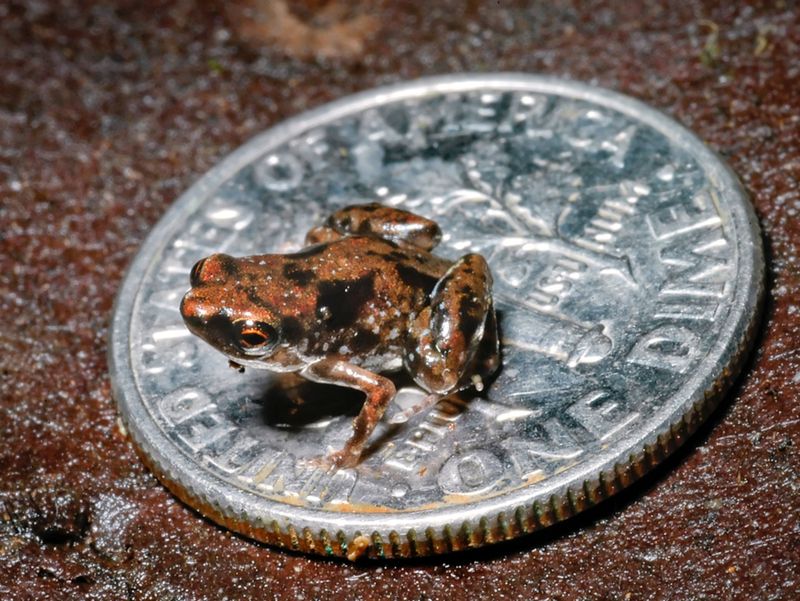
No bigger than a housefly, the Paedophryne amauensis holds the title of the world’s smallest frog at a mere 7.7 mm. Discovered in the dense rainforests of Papua New Guinea, this minuscule creature astonishes scientists with its size. Its chirp resembles that of an insect, making it difficult to locate. Enigmatic and elusive, this frog’s presence raises questions about how many other tiny wonders remain undiscovered in the vast undergrowth. Despite its size, the Paedophryne amauensis plays a vital role in the ecosystem, feeding on even smaller insects.
Dwarf Gecko (Sphaerodactylus ariasae)
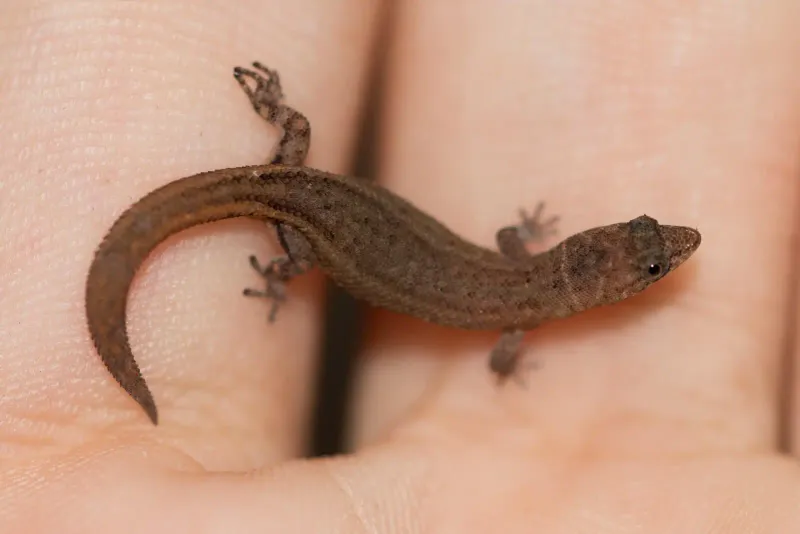
The Dwarf Gecko, native to the Dominican Republic, measures a tiny 16 mm in length. Often seen scurrying across leaves, its small stature belies a vibrant personality. Its delicate scales shimmer in the sunlight, displaying a variety of hues. This gecko’s quick movements and bright eyes make it a master of camouflage. Despite its small size, the Dwarf Gecko plays a significant part in controlling insect populations within its habitat. Its charming presence adds a splash of color to the rich biodiversity of the Caribbean.
Western Pygmy Blue Butterfly
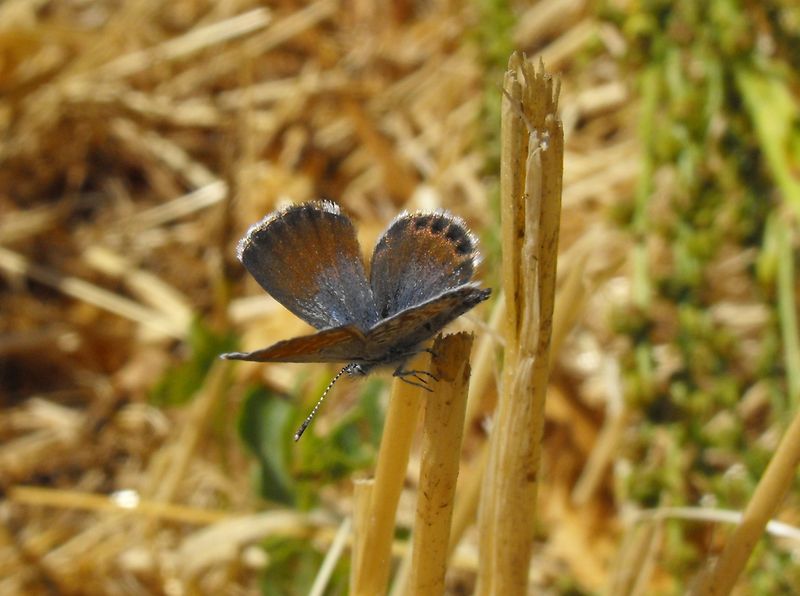
The Western Pygmy Blue Butterfly, with a wingspan ranging from 12 to 20 mm, is one of the tiniest butterflies fluttering around North America. Its delicate wings, painted in subtle shades of blue and brown, blend seamlessly with its environment. This butterfly thrives in arid regions, flitting from flower to flower in search of nectar. Despite its fragile appearance, it demonstrates resilience in harsh climates. A testament to nature’s artistry, the Western Pygmy Blue continues to captivate observers with its graceful flights and understated beauty.
Patu digua Spider

In the world of spiders, the Patu digua stands out for its astonishingly small size, measuring less than 0.4 mm. Found in the dense forests of Colombia, this minuscule arachnid is almost invisible to the naked eye. Its web, though equally tiny, is a marvel of engineering, strong enough to catch even tinier prey. The Patu digua’s existence challenges our perception of size and complexity in nature, reminding us that even the smallest creatures have a role to play in their ecosystems.
Speckled Padloper Tortoise
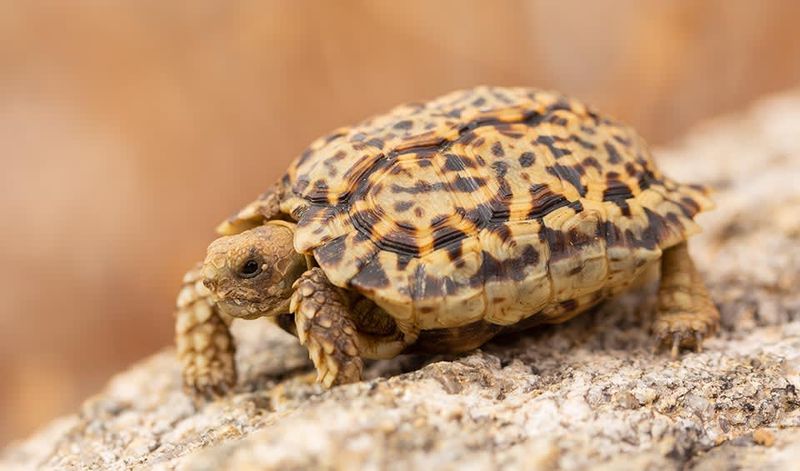
Native to the arid landscapes of South Africa, the Speckled Padloper Tortoise is renowned as the world’s smallest tortoise. Adult tortoises reach a modest 6–8 cm in shell length, making them perfect fits for a child’s hand. Their shells, adorned with unique speckled patterns, provide camouflage against predators. These tiny tortoises navigate rocky terrains with surprising agility, foraging for food in the sparse vegetation. Despite their size, Speckled Padlopers exhibit remarkable resilience, perfectly adapted to their harsh environments.
Fairyfly Wasp (Mymaridae family)
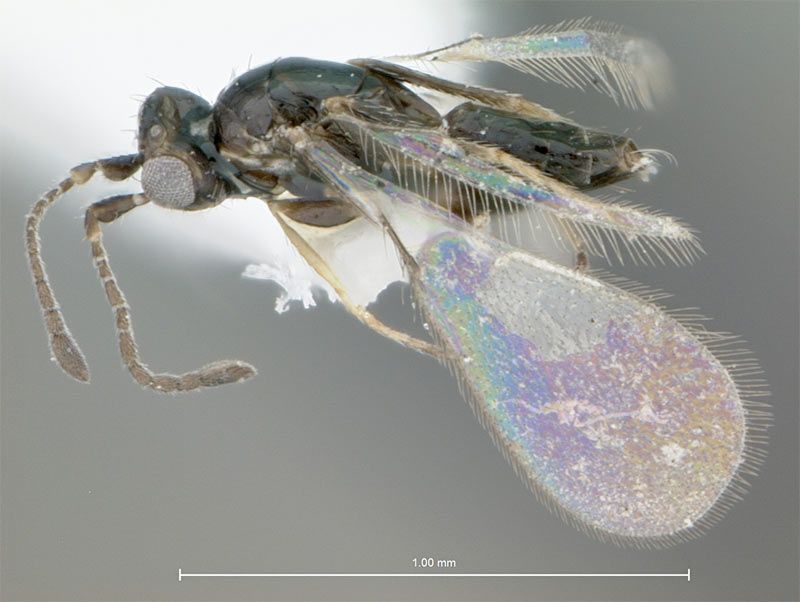
The Fairyfly, belonging to the Mymaridae family, is not just any wasp—it’s a parasitic wasp, some species of which measure under 0.2 mm. So small that it can be mistaken for a speck of dust, this wasp is a master of deception. Found across various continents, it lays its eggs in the eggs of other insects, ensuring the survival of its lineage. Despite their size, Fairyflies play a crucial role in controlling pest populations, showcasing the significant impact of even the tiniest life forms in nature.
Etruscan Shrew
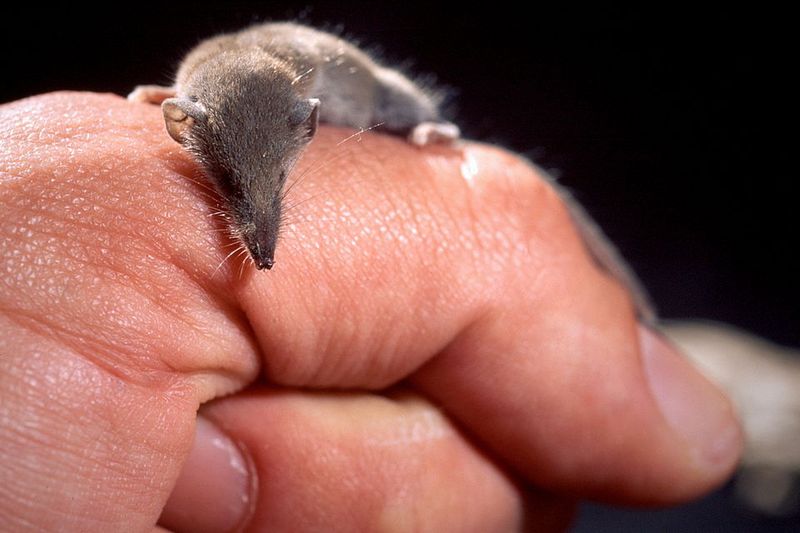
The Etruscan Shrew, weighing less than a penny at about 1.8 grams, is the smallest known mammal by mass. This energetic creature, with its sharp snout and bright eyes, darts quickly in search of food. Its rapid heartbeat, clocking up to 1,500 beats per minute, supports its high metabolism. Found across Europe, North Africa, and Asia, the Etruscan Shrew’s continuous movement is vital for its survival, as it requires constant nourishment. A dynamic survivor, it thrives in various habitats, from grasslands to forests.
Thorn Bug (Umbonia crassicornis)
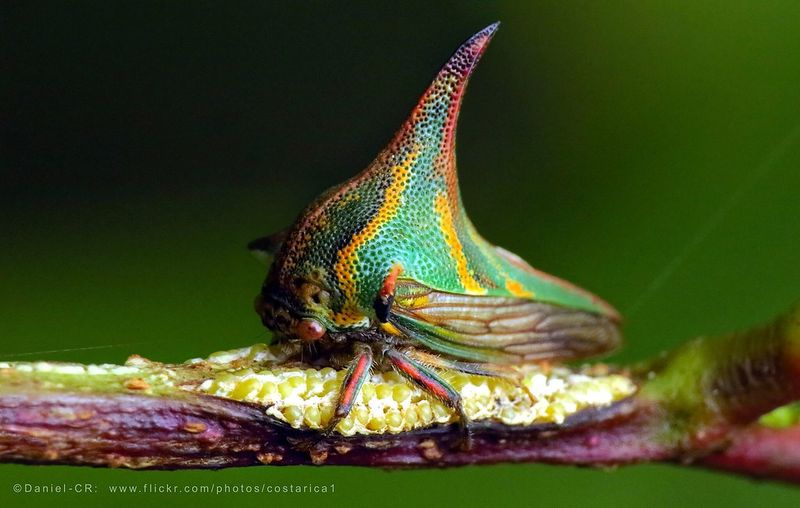
Imagine a tiny, colorful creature with a peculiar horn-like structure on its back. The Thorn Bug, native to the tropical regions of Central and South America, uses this remarkable feature as a defense mechanism to blend with thorns and twigs. Its vibrant hues help it camouflage, making it a master of disguise.
These insects are known for their social behavior, often found in groups that resemble a thorny branch. They communicate through vibrations, a unique trait in the insect world. This fascinating communication method allows them to alert each other of potential threats.
Interestingly, the Thorn Bug’s diet consists mainly of plant sap, which it extracts using its specialized mouthparts. Despite their small size, they can significantly impact their environment, particularly when they gather in large numbers.
Brookesia Micra Chameleon
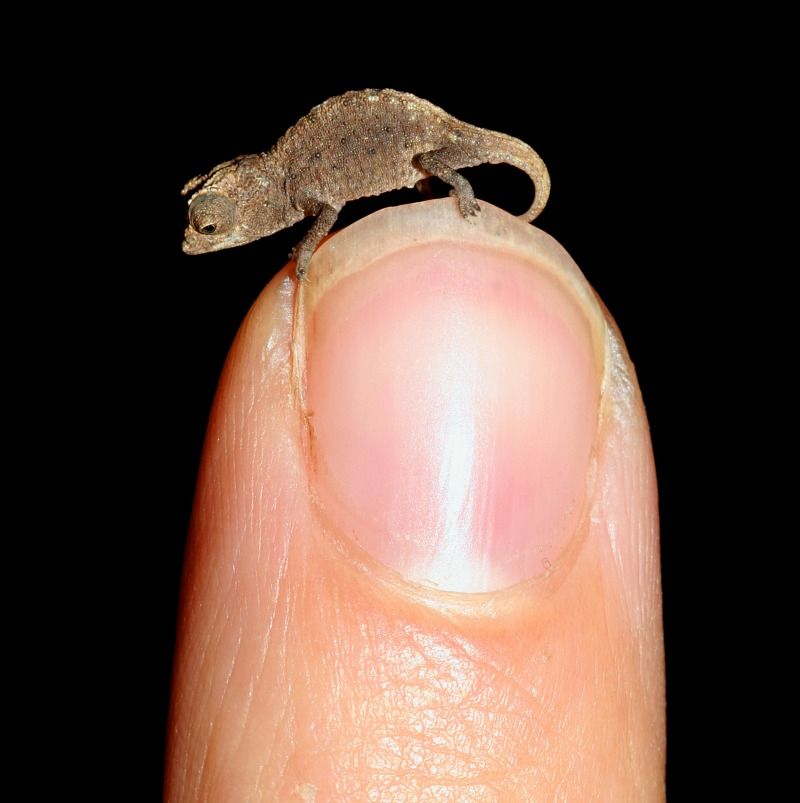
The Brookesia Micra Chameleon, native to Madagascar, is so small it can comfortably rest on a match head. Measuring just over an inch in length, it holds its own in the dense forest floor, blending seamlessly with fallen leaves. These chameleons are masters of survival, using their camouflage to avoid predators. Despite their size, they exhibit typical chameleon traits, such as moving independently rotating eyes and a prehensile tail. This tiny reptile is a testament to the unique biodiversity found on the island of Madagascar.
Bee Hummingbird
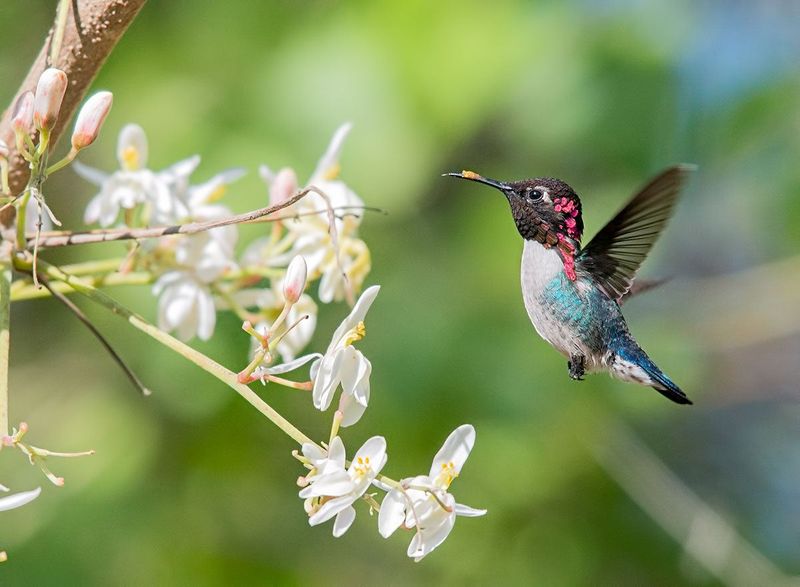
Cuba is home to the Bee Hummingbird, the world’s smallest bird, measuring just 2.2 inches in length. This vibrant avian marvel flits from flower to flower, its wings a blur as it sips nectar. Despite its tiny size, the Bee Hummingbird is a pollination powerhouse, playing a vital role in its ecosystem. Its iridescent feathers, shimmering in the sunlight, captivate birdwatchers and nature enthusiasts alike. With a metabolism that matches its rapid wingbeats, this hummingbird is a lively symbol of the natural world’s complexity.
Stout Floater (Schindleria brevipinguis)

The Stout Floater, scientifically known as Schindleria brevipinguis, is among the smallest vertebrates, residing near Australia’s Great Barrier Reef. This tiny fish, barely noticeable to the untrained eye, measures just a few millimeters. Despite its minuscule size, it plays a crucial role in the reef’s intricate food web. Often found floating near the surface, this fish is a master of survival, adapting to the ever-changing marine environment. Its presence highlights the diversity and complexity of life beneath the ocean’s surface, where even the smallest beings are vital.
Featherwing Beetle (Scydosella musawasensis)
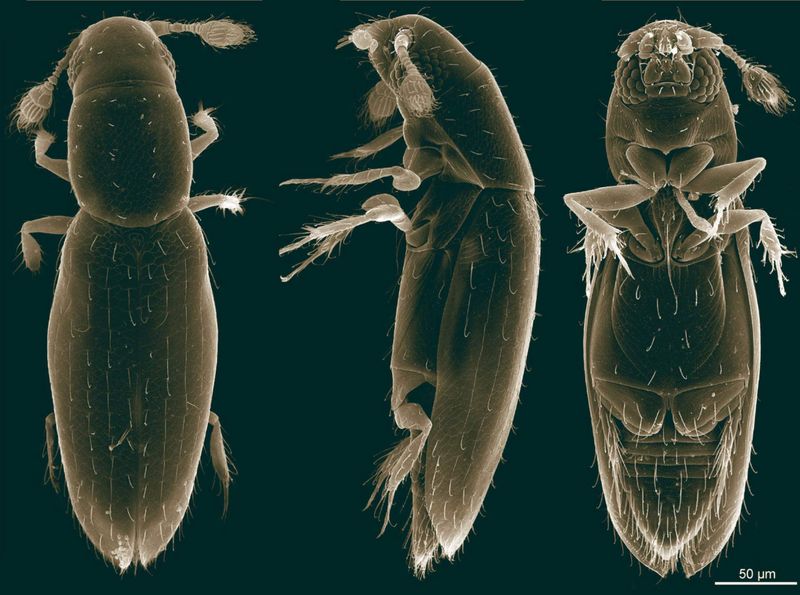
The Featherwing Beetle, especially the Scydosella musawasensis species, holds the record for the smallest insect, at just 0.3 mm. Found in tropical regions, this beetle’s minuscule size makes it nearly invisible. Its delicate wings, resembling feathers, allow it to navigate through its environment with ease. Despite its size, it plays a pivotal role in nutrient recycling. Its presence is a reminder of the intricate balances within ecosystems, where even the smallest creatures contribute to the larger picture.
Dwarf Chameleon (Bradypodion species)
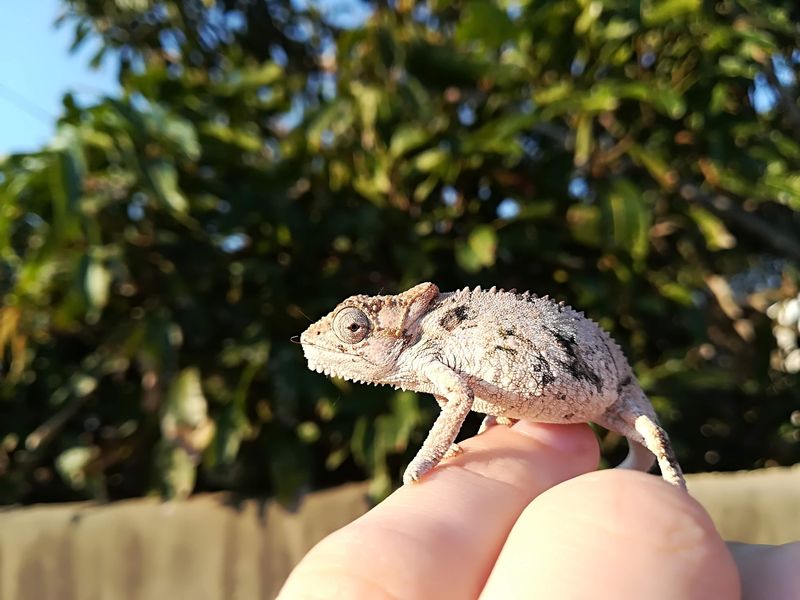
Dwarf Chameleons, belonging to the Bradypodion species, are native to South Africa and are known for their small, finger-sized stature. These chameleons exhibit remarkable adaptability, effortlessly blending into their surroundings with their color-changing abilities. Their independently moving eyes give them a 360-degree view, a handy trait for spotting prey and predators. Despite their size, Dwarf Chameleons are fierce insect hunters. These charming reptiles add a touch of magic to the forest floor, embodying the wonders of evolution and adaptation.
Brazilian Gold Frog (Brachycephalus)
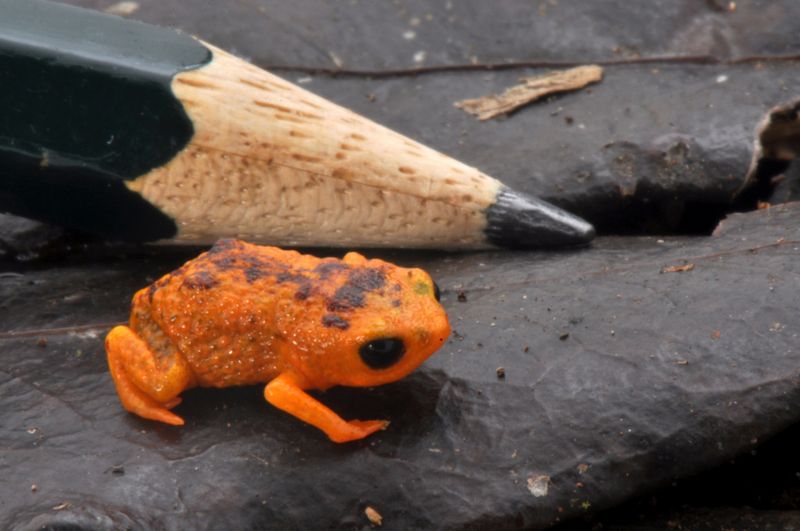
The Brazilian Gold Frog, or Brachycephalus, is a vivid orange amphibian found in the rainforests of Brazil, measuring under 10 mm. Its striking coloration warns predators of its toxicity, a defense mechanism key to its survival. Despite its bright appearance, this frog remains elusive, hiding among the leaf litter. This tiny frog’s life is a testament to the diversity of the Brazilian rainforests, where every layer teems with life. Its presence underscores the importance of preserving these habitats, home to countless unique species.
Pharaoh Ant
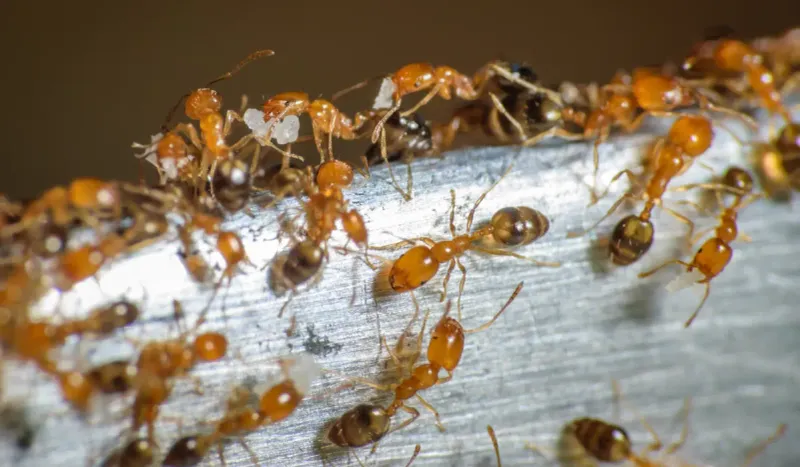
Commonly found in homes and hospitals across the U.S., the Pharaoh Ant measures a mere 2 mm in length. Despite its size, this tiny ant has a big reputation as a persistent pest. Known for its ability to infiltrate buildings and form extensive colonies, it often goes unnoticed until a trail appears. The Pharaoh Ant’s resilience and adaptability make it a challenging opponent for pest control. Its presence serves as a reminder of nature’s resourcefulness, where even the smallest creatures can have a significant impact.

